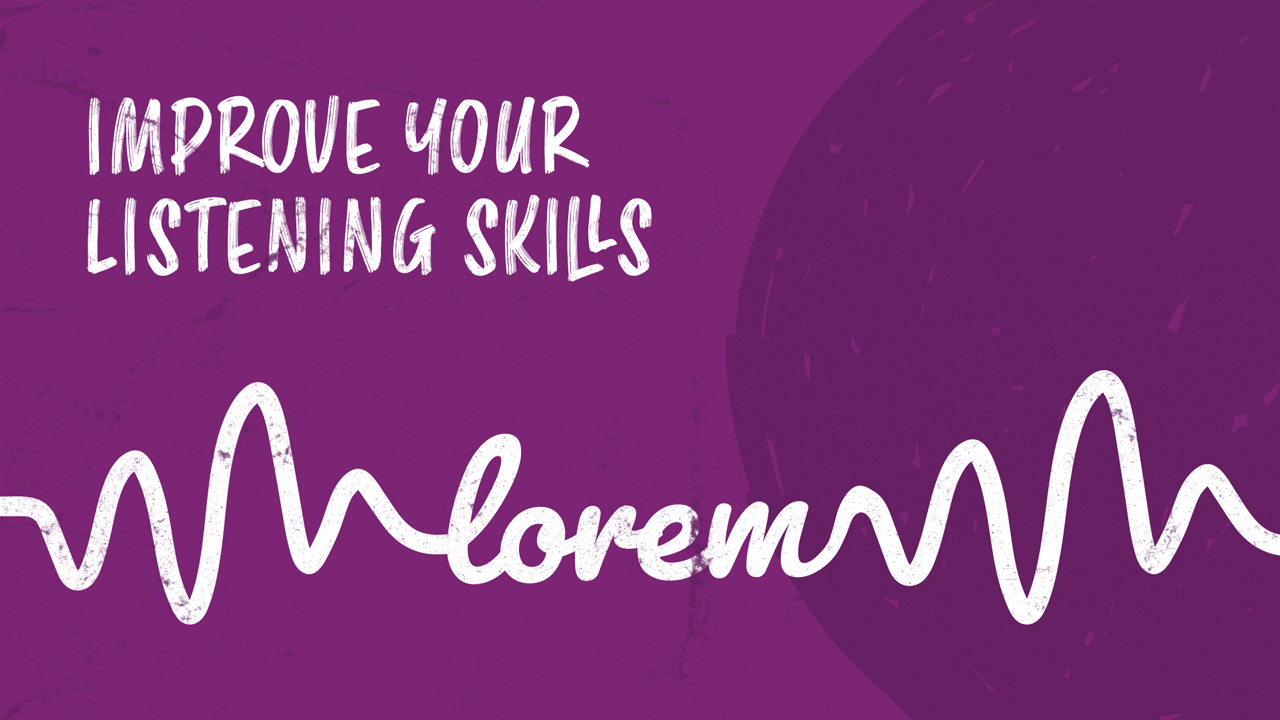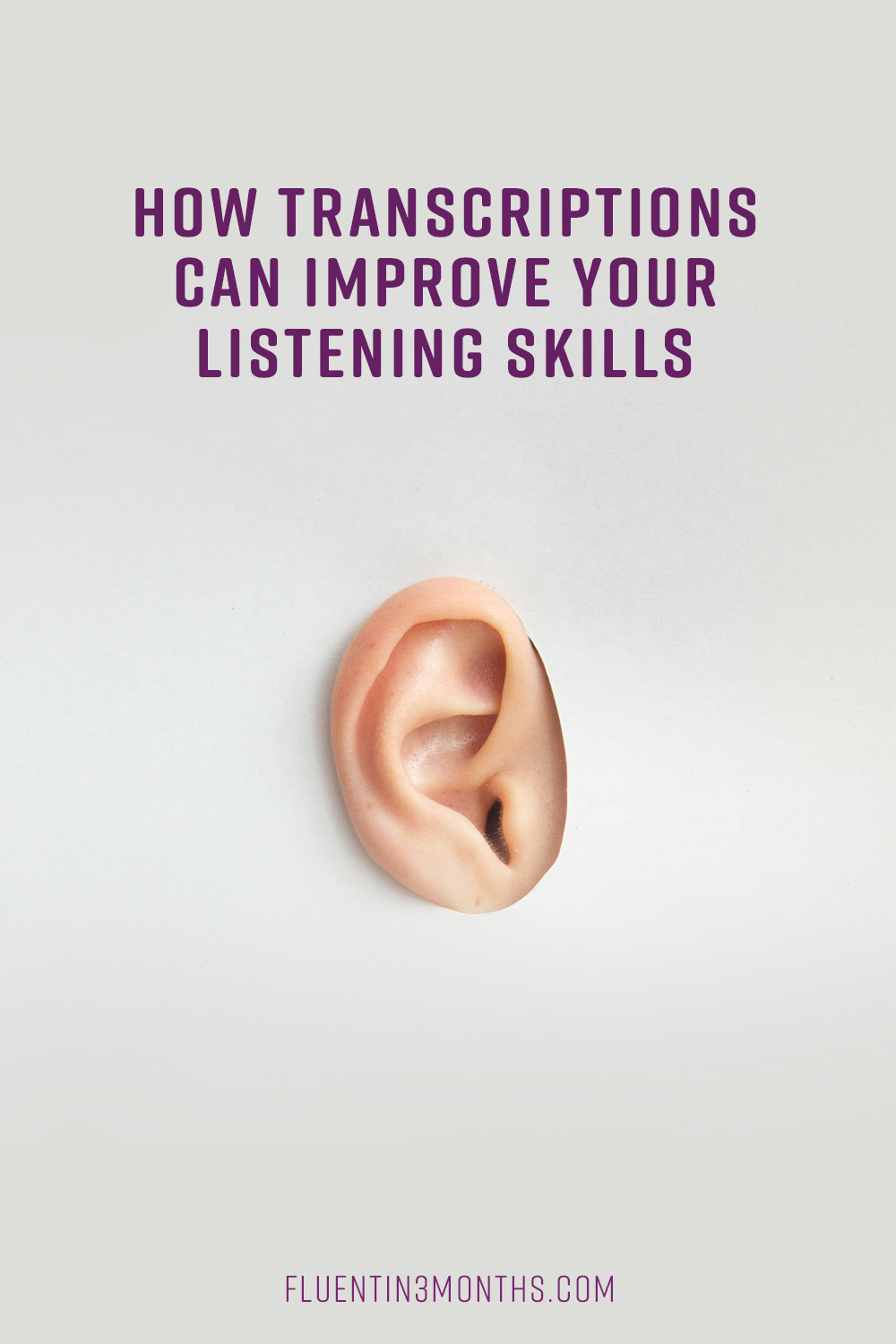How Using Transcriptions Can Improve Your Listening Skills
If you’re a language learner, you know how important it is to have good listening skills.
In a conversation, many factors can affect each speaker's understanding and response. It might be the tone, timing, or facial expressions and hand gestures. Whatever the factor, listening is still the best way to perceive the other end's message.
While listening comprehension is the most challenging part of language acquisition, it's vital to focus on and improve it. Without it, it's hard to understand a message, respond, or feel something.
But aside from being all ears, you can rely on other ways, like transcription, to help improve your listening skills in a simple and interesting way.
Here’s how:
Table of contents
- Advantages of Transcribing: How It Can Help Improve Your Listening Skills
- It Helps You Retain Words and Message Better
- It Facilitates Your Understanding of Sentence Structures
- It Helps Keeping a High Accuracy
- It Allows You to Save Time
- It’s an Enjoyable Way to Learn Languages
- The Transcribing Techniques that Can Help You Improve Your Listening Skills
- Manual Transcription
- Automatic Transcription
Advantages of Transcribing: How It Can Help Improve Your Listening Skills
Aside from recording and reference purposes, transcribing is also an effective technique to use for listening exercises.
Transcribing has many benefits and advantages, such as:
It Helps You Retain Words and Message Better
During listening practices, having a quality audio source and notes for reference is an ideal setup.
First, clear and unedited audio helps present the most accurate representation of a speaker's message, tone, and intent. By using clear audio, a listener can easily hear and understand every word, part, pauses, and even voice level of the speaker.
While careful listening helps in remembering words and messages, having notes for reference is more beneficial. Since most individuals prefer or can study better with visual guidance (images, illustrations, or symbols), transcription can help listeners remember words.
As for messages, live transcription is an excellent way to understand the speaker's tone and intent.
If you're unfamiliar with the term, live transcription is when the text can sync to the audio file as per the timing of the recording. In other words, live transcription's pauses and responsive pacing features are great identifiers of a person's emotions, seriousness, intention, and urgency.
It Facilitates Your Understanding of Sentence Structures
Similar to writing, spoken communication is highly effective when sentences are in their proper structures.
Yes, speaking can be straightforward. However, there are many cases when sentence formation can significantly affect the message. Misinterpretation of a sentence can ruin important meetings, agreements, or any other serious conversation.
Whatever it may be, it’s necessary to consider every detail and avoid confusion.
By using transcription, a listener can see the sentences laid out accordingly. As a result, it can be much easier to understand someone's message based on the placement of words, use of punctuations, and other things.
In listening exercises, reading transcriptions simultaneously to listening to the audio can help train speed and correctness in understanding a speaker's words.
As such, by familiarizing yourself with every sentence structure and analyzing real-world examples (like transcriptions), it's only a matter of time before your listening comprehension improves.
It Helps Keeping a High Accuracy
In businesses, academics, and government, accuracy is of utmost importance. With only a simple mistake, a message can change, a plan might fail, and an agreement might not pass. And making silly mistakes in a language you’re learning might feel just as terrible.
This is why organizations use every possible way to keep things accurate, including transcription.
In listening comprehension, correctness is everything. When someone is speaking, it’s almost imperative to recognize every word, sentence, and meaning. With integrity, you can preserve the message and intent of a speaker.
By using transcription, one can learn the right words and punctuations of a speech from an audio file.
Moreover, as audio formats can be distorted or contain corrupted sections, voices can sometimes be unclear, buzzy, or inaudible. In this case, transcription software can use AI to analyze tones that are unclear to human ears and convert them into readable text.
Lastly, listening to audio files while reading their transcriptions can help individuals get familiar with speech patterns, common speaking styles, and many more factors of language learning.
It Allows You to Save Time
It might be common knowledge, but transcription saves time for both recording and understanding purposes.
First, unlike listening to hundreds, maybe thousands of lines, transcribing tools can generate text from an audio file in a matter of seconds or minutes, depending on the content's length.
Besides, written or visual content is easier to grasp than verbal and other on-demand media.
Next, for language learners with only a little time to spare, transcription can help speed things up. Instead of repeating an audio's part because you haven’t understood a sound, you can copy and learn a word's definition quickly from a transcription. This way, lessons can be bite-sized given how easy the text is to divide into parts.
It’s an Enjoyable Way to Learn Languages
For many individuals, learning a new language can be challenging. With countless letters, symbols, pronunciations, and other obstacles, it's easy to get tired, overwhelmed, or even bored.
Transcribing can spice things up a little bit.
When listening to the audio file of a speech, conversation, or any other audio content, a reference at hand can help make learning fun. Why? Since you have a readable copy of the audio, you can worry less about failing to understand. Consequently, you can focus more on the message instead of furiously jotting down notes.
Unlike solely listening to a speaker, reading a transcription feels like viewing a script.
It can feel like you're directing someone or you're ahead of the curve since you already know what the speaker will say in the following minutes. In fact, according to a report by the University of California, spoilers, can, in many cases, make watching more fun and the spectator more focused.
Similarly, transcriptions help you understand the entirety of a speech, focus more on other essential tasks of listening, and appreciate the message more.
The Transcribing Techniques that Can Help You Improve Your Listening Skills
Due to its usefulness and specific requirements, many organizations and individuals have come up with numerous transcribing techniques, namely the following:
Manual Transcription
As the name suggests, manual transcription is entirely manual. Instead of using automated tools, a person will listen carefully to a speaker and jot down things.
Apart from writing down all words, there are different methods in manual transcribing:
1. Verbatim transcription:
Verbatim transcription is about converting every word into text.
Unlike other forms of transcription, verbatim takes more time when done manually. Also, when live transcribing, it's almost impossible to capture every word without missing anything. Consequently, it's less prevalent in more fast-paced settings.
However, it's advantageous for pointing out every little detail. It’s an excellent fit for information-sensitive events like meetings, agreements, and many more.
2. Intelligent transcription:
Intelligent transcription is a more concise version of verbatim transcription.
Unlike the former, intelligent transcription excludes unnecessary words or elements from the script. In other words, it forgeos things that add no meaning or value, or that lengthen the passage.
While it's suitable for conserving space and summarizing context, it's not advisable for learning languages. Since words can change and sentences might vary in length, learners can confuse meanings when listening to the original audio.
3. Edited transcription
Edited transcription is like an intersection of verbatim and intelligent transcription.
First, it cuts out most of the highly unnecessary elements, but still ensures the integrity of the message.
Next, it identifies and corrects grammatical issues and makes sentences clear and easy to understand.
Above all, it's more pleasant to read and digest than the previous two methods, given its balance of conciseness and completeness.
4. Phonetic transcription
Phonetic transcription is a method used significantly by professional transcribers and more prominent events, like hearings and assemblies.
Since it uses the International Phonetic Alphabet (IPA), it's much faster to type words and capture pronunciation.
However, this method requires a specialized input device or 3rd party software keyboard to work. Also, one must have fast cognition skills, typing speed, and multitasking capabilities when transcribing.
Automatic Transcription
Since it takes time to transcribe manually and not everyone can remember the entire IPA, automatic transcribing tools have become mainstream.
Transcription software can convert audio into text in a matter of seconds, as opposed to the considerably longer time it takes to transcribe manually.
Accordingly, it's easier to check yourself when listening or learning a language. Apart from that, users can also get many features, like the following:
- More language support: Aside from US and UK English, many transcription tools support different languages, from the most common to lesser-known ones.
- Editable text: Yes, it's possible to edit the text in automatic transcription. However, it's much easier to add, remove, or change parts from software-generated digital documents.
- Faster transcription: One clear advantage of automatic transcription is speed. Instead of painfully waiting for hours and doing tedious tasks, transcription tools make things faster and easier at the same time. With only a few clicks, an audio file can have a completely transcribed passage.
Manual and automatic transcription are both helpful in mastering a language faster and effectively. They can make the challenging process involved in language learning more enjoyable and interesting.




Social